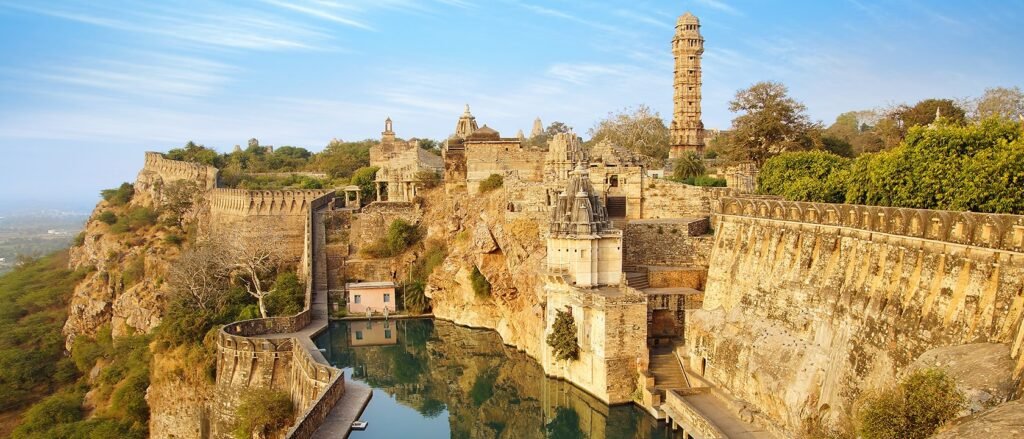
Fateh Sagar Lake in Rajasthan is a charming lake surrounded by hills and woods. This artificial lake was constructed by Maharana Jai Singh in 1678 AD and it lies north of Lake Pichola. It was later reconstructed during the reign of Maharana Fateh Singh (1884-1930 AD) after the earthen bund (dam) was washed away in floods. The Maharana built Connaught Dam to commemorate the visit of the Duke of Connaught and the lake was renamed Fateh Sagar Lake. Fateh Sagar Lake is one of the four lakes in Udaipur and it houses three small islands. The largest among them, the beautiful Nehru Island, is popular with tourists; the second island has a public park and a spectacular water-jet fountain; the third island is home to the Udaipur Solar Observatory. All the islands can be visited by motorboats. The calm, blue surface of the lake set against the green mountains make Udaipur – India’s ‘second Kashmir’.

This delightful lake, bordered by hills and woodlands, lies to the north of Lake Pichola. This artificial lake is connected to Lake Pichola by a canal. The lake houses the beautiful Nehru Island as well as an islet on which stands the Udaipur Solar Observatory. It was inaugurated by the Duke of Connaught and was initially called Connaught Bundh.
Some more places to visit near Fateh Sagar Lake in Rajasthan
Chittorgarh 117 Kms away from Fateh Sagar Lake .
VISIT THE LAND OF INDIA’S FINEST FORT
Chittorgarh resonates with stories of Rajputana bravery, pride and passion. The bards of Rajasthan sing tales of courage and sacrifice recounting stories that are known to every child and adult in the city. Chittorgarh is named after its most imposing structure, the Chittorgarh Fort which stands atop a 180 metre high hill and is spread across 700 acres.
Chittorgarh Fort has had a tumultuous past. This bastion of the Rajputs has faced violent attacks thrice in its entire history. The first was in 1303 when the Sultan of Delhi, Ala-ud-din Khilji, who was enamoured by Queen Padmini, launched an attack to abduct her. More than two centuries later, in 1533, it was Bahadur Shah, the Sultan of Gujarat, who caused immense destruction. Four decades later, in 1568, Mughal Emperor Akbar attacked and seized the fort. It was finally in 1616, under the rule of Mughal Emperor Jahangir that the fort was returned to the Rajputs.


DUNGARPUR
THE CITY OF HILLS
Dungarpur is as exotic as the green marble found here and shipped globally and liessnug in the foothills of the Aravalli range. Harsh and wild in the northeast and teeming with life in the fertile plains of the southwest, it is irrigated by two rivers, Mahi
And Som.
Dungarpur’s rise to tourist fame is thanks to the exceptional architecture of its palaces and royal residences. These stone structures are adorned with ‘jharokhas’ (windows)and built in a style that was born during the times of Maharawal Shiv Singh (1730-1785 AD). Dungarpur’s goldsmiths and silversmiths are skilled artisans Famous for Their lacquer-painted toys and picture frames.
Dungarpur was founded in 1258 AD by Rawal Veer Singh, the eldest son of Karan Singh, the ruler of Mewar, after he drove out the local Bhil chieftain named Dungariya. Later rulers of Dungarpur added to the town’s architectural heritage.

Jhalawar, once called Brijnagar is known for its rich natural wealth of vibrant flora and fauna. However, unlike other cities of Rajasthan, Jhalawar has a rocky but water-laden verdant landscape. Red poppy fields and orange laden orchards are strewn across Jhalawar, lending it a colourful look. They also contribute a major share to the production of citrus in the country. This place has a varied cultural heritage that includes many forts and palaces from the Rajput and Mughal periods. It is solely famous for the large numbers of temples and religious sites.
Jhalawar was named after its founder, Jhala Zalim Singh in 1838. He was the Dewan of Kota State and established the town as a cantonment, then known as Chaoni Umedpura near the existing Jhalrapatan Fort. At that time, the township was surrounded by dense forests which were home to many exotic species. The Dewan often came here to hunt and grew so fond of the place that he decided to turn it into a township. It was later turned into a military cantonment when the Maratha invaders passed through the city to capture Hadoti states.